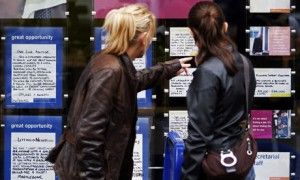The Upside-Down Workforce
It’s hard to say this spring whether it’s more difficult for the class of 2011 to enter the labor force or for the class of 1967 to leave it.
Students now finishing their schooling—the class of 2011—are confronting a youth unemployment rate above 17 percent. The problem is compounding itself as those collecting high school or college degrees jostle for jobs with recent graduates still lacking steady work. “The biggest problem they face is, they are still competing with the class of 2010, 2009, and 2008,” says Matthew Segal, cofounder of Our Time, an advocacy group for young people.
At the other end, millions of graying baby boomers—the class of 1967—are working longer than they intended because the financial meltdown vaporized the value of their homes and 401(k) plans. For every member of the millennial generation frustrated that she can’t start a career, there may be a baby boomer frustrated that he can’t end one.
Cumulatively, these forces are inverting patterns that have characterized the economy since Social Security and the spread of corporate pensions transformed retirement.
Since World War II, young people (including those employed part-time in school) have consistently been much more likely to work than older Americans. Federal statistics show that on average during the 1950s, the share of Americans ages 16 to 24 in the labor force (52 percent) was nearly 12 percentage points higher than the share of Americans 55 and older (just under 41 percent). By the 1990s that gap in the labor market participation rate for the youngest and oldest adults had widened to nearly 30 percentage points. At that point, Americans younger than 24 were twice as likely to be employed as Americans older than 55.
But that spread began narrowing after 2000, and it has closed with unprecedented speed during the slowdown. Since December 2006, the employment-to-population rate for young people has fallen by a dizzying 10 percentage points, from about 55 percent to just 45 percent. That decline, much sharper than in previous recessions, has reduced the share of employed young people to the lowest levels in 60 years.


